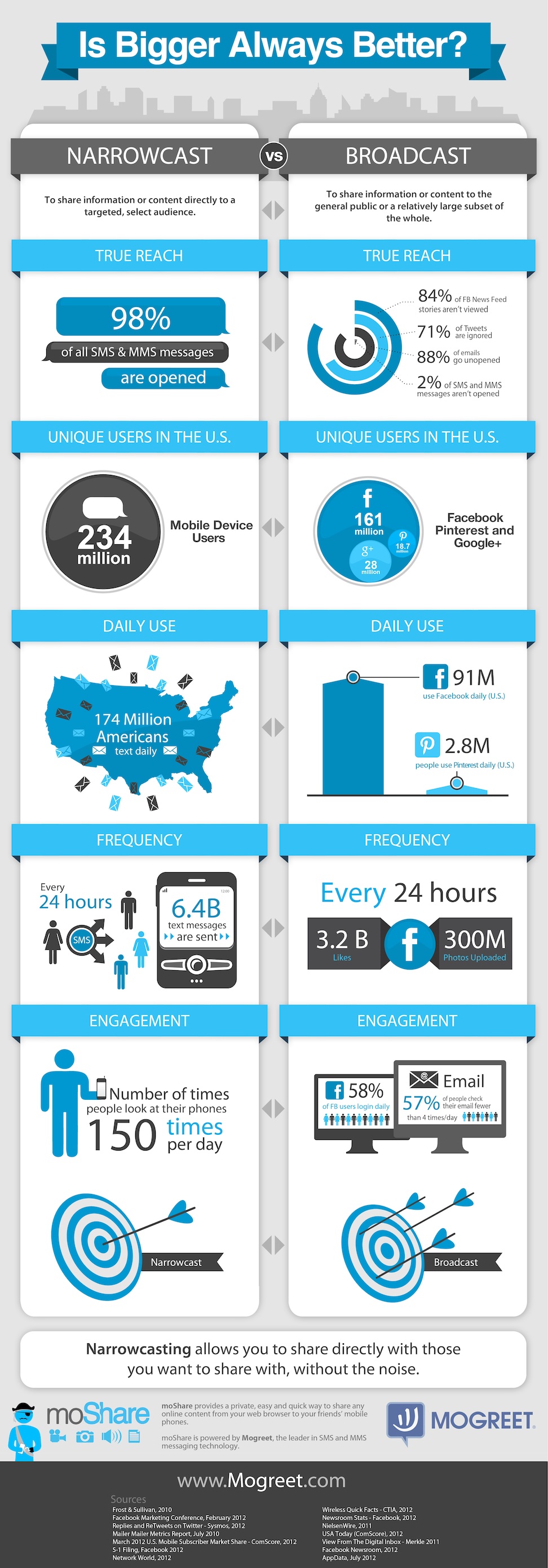A recent infographic by Mogreet, a leader in mobile video and MMS messaging, stacks up the usage and engagement of SMS & MMS mobile communication against social media’s top players Facebook, Twitter, Google+, and Pinterest. They separate the two into what they call Narrowcast and Broadcast.
Narrowcasting is the sharing of information directly to its intended recipient, thereby breaking through all of the clutter. Broadcasting is the mass public sharing, such as a post or tweet. The infographic supports that you’re not only more likely to reach your audience but they’ll be more apt to respond when you do it. This conclusion is drawn from some very interesting statistics.
What does this mean for marketers?
SMS and MMS are powerful marketing tactics that can get your message directly to your audience and more importantly, they’ll see it. What is the average click rate of your last email? It’s unlikely it was above 15%. If it was, you’re part of the lucky minority. How many people viewed your Facebook page? Yes, you can see that now. Tweets go by even faster. How many of those get a mention or retweet? According to the infographic, 98% of all SMS and MMS messages are opened. That’s a remarkable percentage and clearly demonstrates how much this medium is valued.
Build a Personal Touch-point with Your Loyal Customers
Recently I was talking with the owner of a small family restaurant in my area. They were experimenting with SMS messaging. At first, it was slow going collecting their customer’s information but after a while of asking nicely, displaying signs, and not abusing those already in the program, they started to get a good base of numbers. The owner has had great success with using this channel in a number of ways. In fact, it has become their primary means of communication that trumps email, social, and traditional advertising.
Here shows how they are using SMS messaging.
- Timely deals - Restaurants have predictable, and sometimes non-predictable, slow times that sack profit. Instead of making employees go home early, they send out a promotion offering a discount within the next few hours.
- Upcoming events - If you’re a local business then you know how valuable it is to be involved in the community. They announce where they’ll be and what they’ll be promoting. This is also a great way to include your partners and benefit from each others audiences.
- Special Announcements - Nobody can predict the future and sometimes weather or other events cause a change in regular business. They use the SMS channel to instantly inform their customers if they are closing early, not open on particular day, or a change in staff.
Below is the infographic titled “Is Bigger Always Better?”

Infographic by Mogreet








